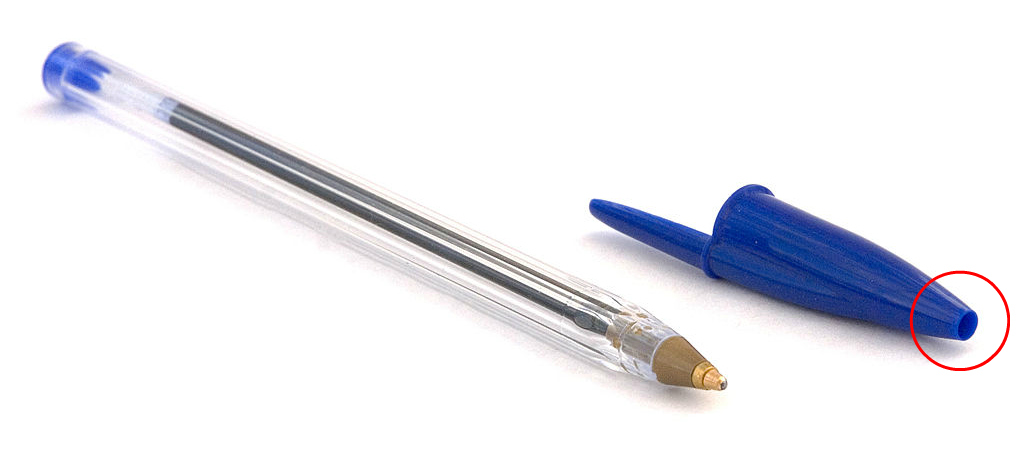Sometimes, science is all about the mind-aching big picture. Like the idea that our Universe is just a giant hologram, or that we've actually detected gravitational waves from a neutron star collision. Or that we might not actually have as much free will as we think…
Those are really exciting concepts. But then there are other times when you come across a day-to-day application of technology that's so simple and yet so important, it reminds you what all this innovation is about. Case in point: that ubiquitous hole at the top of your BIC pen cap.
You've probably never given it much thought, or if you have, you've probably brushed it off as some random design feature that regulates air pressure or stops ink from drying out. And, yes, having a hole on their does allow you to close the lid properly without the air pressure issue. But it also serves another simple yet ingenious purpose – reducing the risk of choking deaths.
Turns out it's not just us who love chewing on pen lids – a whole lot of people do it, and that can lead to lids getting accidentally swallowed and lodged in the windpipe, with potentially fatal consequences.
By simply adding a larger hole to the top of the lid, pen company BIC increased air flow and the chance that people would still be able to breathe even if that happens – a design feature that, quite literally, saves lives.
"The reason that some BIC pens have a hole in their cap is to prevent the cap from completely obstructing the airway if accidentally inhaled," the company writes on its website. "This is requested by the international safety standards ISO11540, except for in cases where the cap is considered too large to be a choking hazard."
Other pen manufacturers have followed suit and added larger holes to the top of their pens.

Accidentally swallowing parts of pens and pencils, including pen caps, accounted for several thousand trips to US emergency rooms between 1997 and 2010, according to data collected through the National Electronic Injury Surveillance System.
Inhalation of foreign objects can be particularly serious among small children. A 2013 case report from the Annals of Pediatric Surgery found that 3 to 8 percent of "non-food-related aspirations" involved children swallowing pen caps.
(Note: if you do find yourself or a loved one choking on a pen lid, here are some tips on what to do.)
Not impressed by that beautiful application of technology to our daily lives? Well, how about that tiny "breather hole" in airplane windows, which has the important job of managing the tension that builds up between internal and external pressure of an airplane?
And while you're at it, there's also a simple but awesome reason that plane windows always have rounded edges. Enjoy:

A version of this article was originally published in May 2016.
